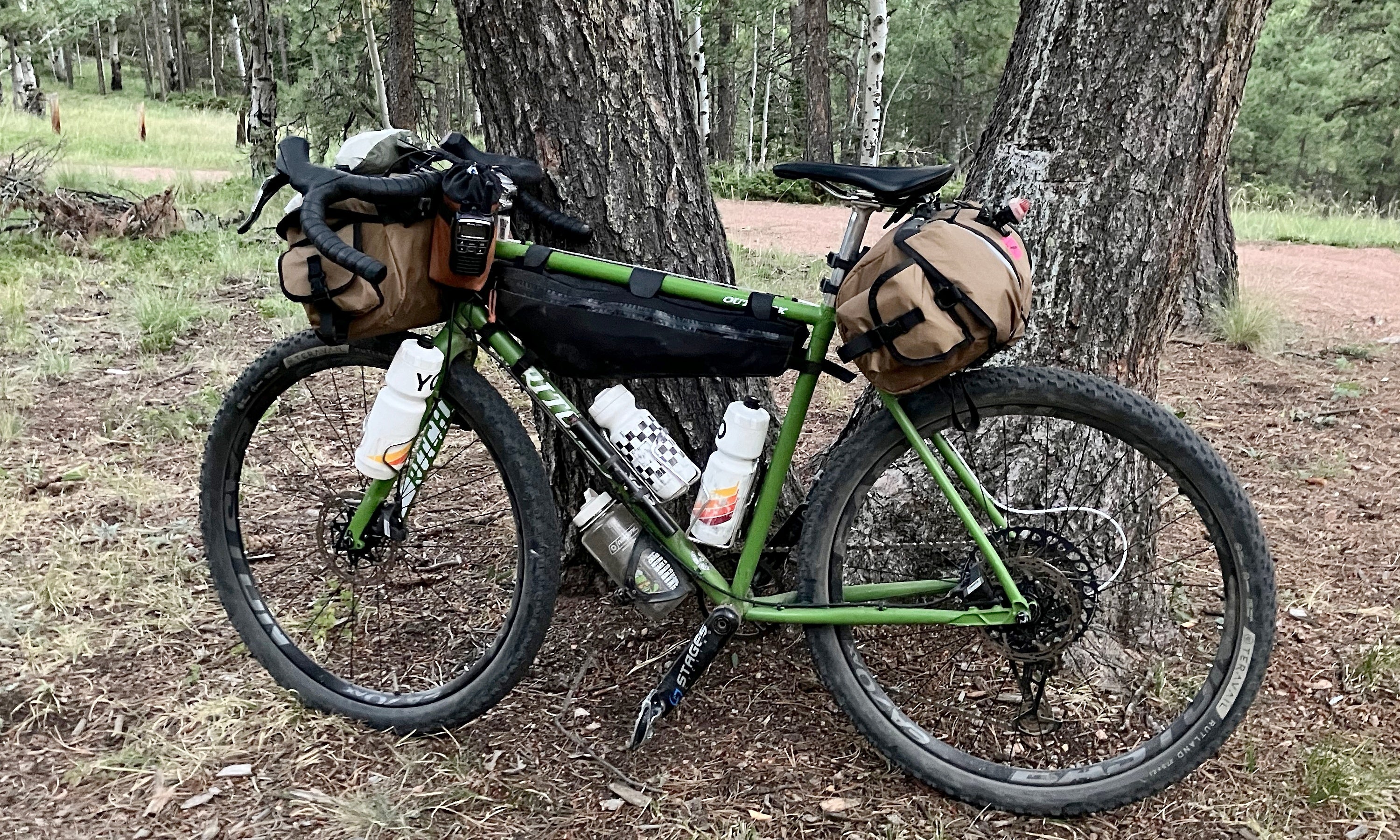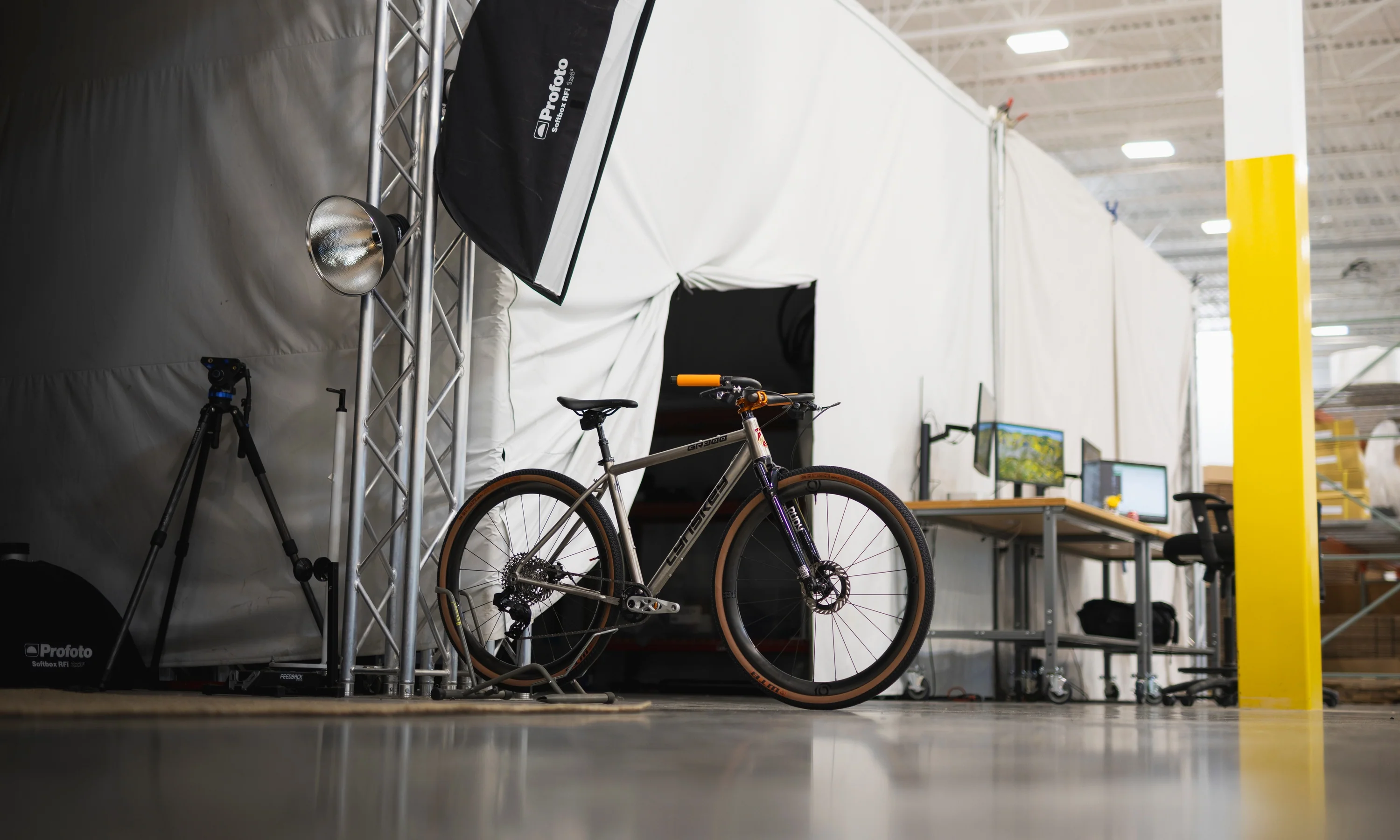How many aero tricks is this rider using? Photo: Ian Matteson.
Gravel races are getting more competitive, and racers need every edge to stay ahead. Even if you don’t compete, it’s always fun to go a little faster, right?
If you want more speed, aerodynamics are key. Air resistance is the greatest force cyclists face, so if you can reduce drag, you will go faster while expending less energy.
Traditionally, deep-section aero wheels are the best upgrade to cheat the wind. But it turns out, aero wheels are less effective on gravel bikes than they are on road bikes. Wide and knobby gravel tires disrupt airflow and make it difficult for aero wheels to reduce drag. That means gravel riders need to look elsewhere to maximize their aerodynamic efficiency. Fortunately, there are plenty of other ways to get more aero on your gravel bike (and any bike). Here’s how.
Lower your riding position
 Low is fast. Photo: Dane Cronin.
Low is fast. Photo: Dane Cronin.
The biggest source of drag is actually your body. Depending on your riding position, you account for 60-82% of total drag. So to get more aero, focus on reducing your frontal profile. The easiest and cheapest way to do this is to lower your riding position. Consciously lowering your head and getting your torso close to horizontal can reduce drag as much 20%.
Getting low can be made easier by riding in the drops or with your forearms level in the hoods (a low torso with arms level in the hoods also happens the fastest UCI-legal riding position). You can also achieve a lower position by lowering your bike’s cockpit, but this isn’t permission to run out and slam your stem.
Andy Pruitt, one of the world’s foremost cycling fit experts, explained, “Rarely is the most aerodynamic position sustainable. A rider’s position will end up having to creep upward and get more comfortable to be more sustainable. Ultimately, if you’re more comfortable, you’re going to be able to go faster and harder for longer, rather than fighting to stay in [the most] aerodynamic position.”
Riding in a low position, especially on rough surfaces like gravel, requires lots of practice, flexibility and core strength. You have to find the right balance between too low and too high to maintain comfort and handling. Experiment with your body position and bike fit to find the lowest position you can maintain for extended periods. Over time, as you get stronger and more flexible, you can push your position lower. If you want help finding the perfect position, the best thing to do is get a professional bike fit.
Use aero handlebars
 Aerobars are controversial, but effective. Photo: Ian Matteson.
Aerobars are controversial, but effective. Photo: Ian Matteson.
Clip-on aero bar extensions have proliferated in endurance gravel events because they improve aerodynamics. Aero bars greatly reduce your frontal area and also provide another riding position, which can help improve comfort on ultra-long rides.
Aero bars are effective, but they are also highly controversial in gravel racing. Some racers don’t think they should be allowed in mass-start events because they compromise control, especially on rough roads. If you add aero bars to your gravel bike, make sure to get lots of practice riding them, and don’t get in the aero bars when riding in a group.
Narrower handlebars also yield aero gains. Narrower arm position will reduce your frontal area, but more importantly, it will also affect how air flows over your legs. As you pedal, your legs produce turbulence. Narrower bars that move your arms in front of your legs reduce the resulting drag. Be aware that going too narrow will reduce control, so it’s important to find the right balance.
The handlebars themselves can also contribute up to 30% of a bike’s overall drag at zero degrees of yaw, so it can be worth it to swap traditional round bars for handlebars with flat, aerodynamically-shaped tops.
ENVE’s latest SES AR handlebars are a great (but expensive) option because they use an aero profile while maintaining a decent amount of flare in the drops, which many gravel riders want for more control on technical terrain.
Wear an aero helmet
 A fast group all wearing aero helmets. Photo: Ian Matteson.
A fast group all wearing aero helmets. Photo: Ian Matteson.
Line up for any major gravel race, and you’ll see all the hitters wearing aero helmets. A vented helmet creates a lot of turbulence — that’s a drag. An aero helmet smooths out the airflow traveling through the helmet and around your head.

POC Ventral Mips Bike Helmet Lead Blue Matte
$76.99
The gains from wearing an aero helmet can be significant, in the range of 10-20 watts. Take Giro’s new Eclipse aero helmet, for example. Over 100 miles, the Eclipse is over two minutes faster than the vented Helios helmet. For racers, two minutes can be the difference between finishing on the podium and finishing in obscurity. Most modern aero helmets sacrifice little in terms of ventilation for their aero performance, so they are a convenient way to gain an extra edge
Wear a tighter jersey
Gravel is all about inclusivity. Riders are free to wear whatever they feel comfortable in, including baggy shorts and flannels. Racers, however, stick to skin-tight lycra. Wind tunnel testing has shown that loose fitting clothing can increase aerodynamic drag by 10% or more.

TPC Giordana Scatto Pro SS Jersey Mens
$75.99
Aero kits can be expensive, and things like skinsuits aren’t very practical for gravel racing where you need to carry food and supplies. Fortunately, a tight-fitting kit will get you most of the gains you need. To get as aero as possible, your jersey should be snug enough to eliminate any loose or flapping fabric.
Wear aero socks
If you’re looking for the best bang for your buck, nothing beats aero socks. It may sound silly, but wind tunnel testing has shown that aero socks can save 10-15 watts or more.
“In terms of watts saved per dollar spent it's darn near impossible to beat aero socks for value,” explained Josh Poertner, the CEO of Silca and one of the godfathers of the marginal gains movement in cycling. Most aero socks retail in the $20-30 range, so they are much more affordable than a full aero kit, but can provide comparable gains.
Ride an aero gravel bike frame
 Aero gravel frames like the Pinarello Grevil can be the final piece of the puzzle. Photo: Ian Matteson.
Aero gravel frames like the Pinarello Grevil can be the final piece of the puzzle. Photo: Ian Matteson.
Because wide gravel tires disrupt airflow so much, an aero frame is more valuable for gravel racing than aero wheels. Gravel bikes like the 3T Exploro, Scott Addict Gravel, Pinarello Grevil, Ridley Kanzo Fast, and Cannondale SuperSix Evo SE are designed using aero frame shapes that help them cut through the air.
Yes, getting an aero gravel frame means buying a new frame or getting an entirely new bike, but for racers seeking every advantage possible, this is the final step to maximizing aero efficiency.

























